The Chardham Yatra, comprising four sacred sites nestled in the Garhwal region of Uttarakhand, India, is a spiritual pilgrimage of immense significance for Hindus. Embarking on this journey requires meticulous planning to ensure a smooth and fulfilling experience. In this guide, we will delve into the intricacies of planning for the Chardham Yatra, covering everything from itinerary preparation to essential tips for a memorable pilgrimage.
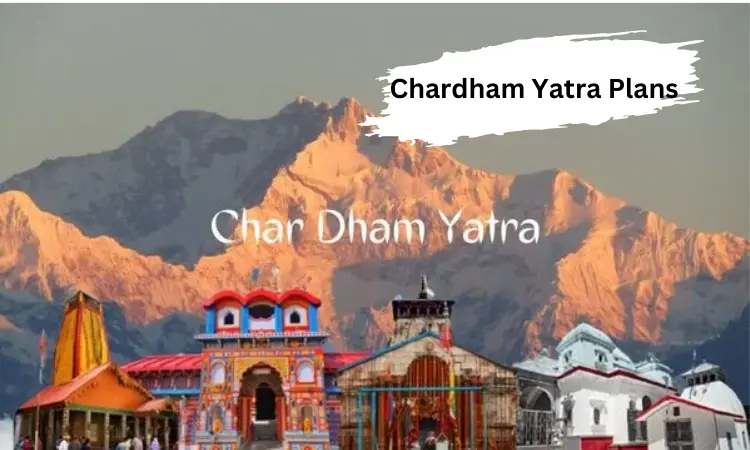
History of Chardham Yatra
The Chardham Yatra places, also known as the Char Dham Yatra, holds profound religious significance in Hinduism. It refers to the pilgrimage to the four sacred sites located in the Indian state of Uttarakhand. These sites include Yamunotri, Gangotri, Kedarnath, and Badrinath, each associated with different deities in Hindu mythology.
The history of Chardham Yatra dates back centuries, with references found in ancient Hindu scriptures and epics. According to Hindu mythology, undertaking the Chardham Yatra is believed to cleanse one’s soul of sins and lead to spiritual enlightenment. The pilgrimage holds immense importance for devout Hindus, who believe that visiting these sacred sites fulfills their religious duties and earns them blessings from the deities.
Significance of Chardham Yatra
The Chardham Yatra is considered one of the most sacred pilgrimages in Hinduism, attracting millions of devotees from around the world every year. Each of the four sites holds its own significance.
- Yamunotri: It is believed to be the source of the Yamuna River and is dedicated to Goddess Yamuna.
- Gangotri: This site marks the origin of the Ganges River and is dedicated to Goddess Ganga.
- Kedarnath: It is dedicated to Lord Shiva and is one of the twelve Jyotirlingas, representing the manifestation of Lord Shiva.
- Badrinath: This temple is dedicated to Lord Vishnu and is one of the 108 Divya Desams, sacred shrines for Vaishnavites.
The Chardham Yatra is not only a religious journey but also a cultural and spiritual experience that brings devotees closer to their faith and heritage.
Challenges for Chardham Yatra
Despite its spiritual significance, the Chardham Yatra poses several challenges for pilgrims:
- Geographical Terrain: The pilgrimage involves traveling through rugged and mountainous terrain, making it physically demanding, especially for elderly pilgrims.
- Weather Conditions: Uttarakhand experiences unpredictable weather, including heavy rainfall, landslides, and snowfall, which can disrupt travel plans and pose risks to pilgrims’ safety.
- Infrastructure: The remote locations of the Chardham sites pose challenges in terms of infrastructure, including road connectivity, accommodation facilities, and medical services.
- Altitude Sickness: Some pilgrims may experience altitude sickness due to the high elevation of the Chardham sites, requiring them to acclimatize properly and take necessary precautions.
Despite these challenges, the spiritual rewards and cultural significance of the Chardham Yatra continue to attract millions of pilgrims each year.
Opening and Closing Dates of Yatra 2025
The opening and closing dates of the Chardham Yatra vary each year and are determined based on Hindu religious calendars and auspicious timings. Generally, the yatra begins in late April or early May and concludes around October or November. The specific dates for each site are announced annually by the respective temple authorities.
In 2025, the tentative opening dates for the Chardham sites are as follows:
- Yamunotri: 30th April 2025
- Gangotri: 30th April 2025
- Kedarnath: 2nd May 2025
- Badrinath: 2nd May 2025
Similarly, the closing dates for the sites vary, with most temples closing around the time of Diwali, the festival of lights, which usually falls in October or November.
Weather Conditions
The weather conditions during the Chardham Yatra vary depending on the time of year:
Summer (April to June): The summer months offer pleasant weather, with mild temperatures and clear skies, making it the ideal time for the pilgrimage. However, pilgrims should be prepared for occasional rainfall and fluctuations in temperature.
Monsoon (July to September): The monsoon season brings heavy rainfall to Uttarakhand, leading to landslides and road closures. Pilgrims are advised to avoid traveling during this time due to safety concerns.
Post-Monsoon (October to November): After the monsoon season, the weather begins to clear up, but temperatures start dropping, especially at higher altitudes. Pilgrims should be prepared for cold weather and occasional snowfall.
Best Time to Visit
The best time to undertake the Chardham Yatra is during the summer months from April to June when the weather is pleasant, and the pilgrimage sites are accessible. Avoiding the monsoon season is advisable due to safety concerns related to landslides and road closures. Post-monsoon months, particularly September and October, also offer favorable weather conditions for the yatra.
How to Reach
The Chardham Yatra can be reached via road, rail, or air. Upon reaching Chardham, you can easily find hotels near the Badrinath temple. Similarly, if you reach Kedarnath, you will find the best affordable Kedarnath hotels near your destination. So, through this Chardham Yatra plan guide, you will be able to explore more about the Chardham pilgrimage yatra.
- By Road: Pilgrims can travel to Uttarakhand by road from major cities like Delhi, Dehradun, and Haridwar. Regular bus services and private taxis are available for transportation to the Chardham sites.
- By Rail: The nearest railway stations to the Chardham sites are Haridwar and Rishikesh. From these stations, pilgrims can hire taxis or board buses to reach the pilgrimage sites.
- By Air: The nearest airports to the Chardham sites are Jolly Grant Airport in Dehradun and Pantnagar Airport in Uttarakhand. From these airports, pilgrims can either hire taxis or take connecting flights to reach the nearest airstrip to their chosen Chardham site.
Chardham Route Map
The Chardham Yatra follows a well-defined route that connects the four sacred sites. The typical route followed by pilgrims is as follows:
- Yamunotri: The journey begins from the town of Rishikesh or Dehradun, from where pilgrims travel to the town of Barkot via Mussoorie. From Barkot, they proceed to Yamunotri, either by road or trekking.
- Gangotri: After visiting Yamunotri, pilgrims return to Barkot and then proceed to the town of Uttarkashi, the base for the Gangotri pilgrimage. From Uttarkashi, they travel to Gangotri by road.
- Kedarnath: After completing the Gangotri pilgrimage, pilgrims return to Rishikesh or Haridwar and then proceed to the town of Guptkashi, the base for the Kedarnath pilgrimage. From Guptkashi, they travel to Gaurikund by road and then trek to Kedarnath.
- Badrinath: The final leg of the journey takes pilgrims from Kedarnath to the town of Joshimath via Guptkashi and Rudraprayag. From Joshimath, they proceed to Badrinath by road.
Itinerary
The itinerary for the Chardham Yatra can be as follows:
- Day 1: Departure from Rishikesh/Dehradun to Barkot
- Day 2: Barkot to Yamunotri and back
- Day 3: Barkot to Uttarkashi
- Day 4: Uttarkashi to Gangotri and back
- Day 5: Uttarkashi to Guptkashi
- Day 6: Guptkashi to Kedarnath
- Day 7: Kedarnath to Guptkashi
- Day 8: Guptkashi to Joshimath
- Day 9: Joshimath to Badrinath and back
- Day 10: Return journey to Rishikesh/Dehradun
Pilgrims may choose to modify this itinerary based on their preferences and time constraints.
Places to Stay During the Yatra
Accommodation options are available at various locations along the Chardham route, including budget and best hotels to stay for Chardham Yatra, guesthouses, dharamshalas (charitable accommodations), and tents/huts for rent. Some popular towns like Barkot, Uttarkashi, Guptkashi, and Joshimath offer a range of lodging options to cater to the needs of pilgrims.
Places to Visit during Chardham
Apart from the main temples at Yamunotri, Gangotri, Kedarnath, and Badrinath, there are several other attractions worth visiting during the Chardham Yatra:
- Yamunotri: Surya Kund, Divya Shila, Hanuman Chatti
- Gangotri: Gaumukh Glacier, Bhagirath Shila, Pandava Gufa
- Kedarnath: Bhairavnath Temple, Chorabari Tal, Vasuki Tal
- Badrinath: Mana Village, Tapt Kund, Vasudhara Falls
Exploring these additional attractions adds depth to the pilgrimage experience and allows pilgrims to immerse themselves further in the spiritual ambiance of the region.
Cost of Chardham Yatra
The cost of the Chardham Yatra can vary depending on various factors such as mode of transportation, accommodation preferences, food expenses, and additional activities. A rough estimate of the cost for a standard Chardham Yatra package including transportation, accommodation, and meals can range from ₹20,000 to ₹50,000 per person. However, this cost can fluctuate based on individual preferences and requirements.
Travel Tips for Chardham Yatra
- Plan in Advance: Make reservations for transportation and accommodation well in advance, especially during the peak pilgrimage season.
- Pack Wisely: Carry essential items such as warm clothing, comfortable footwear, a first aid kit, water bottles, and necessary medications.
- Stay Hydrated: Drink plenty of water to stay hydrated, especially at higher altitudes.
- Respect Local Customs: Follow religious customs and traditions at the pilgrimage sites, such as dressing modestly and refraining from non-vegetarian food and alcohol.
- Be Prepared for Altitude Sickness: Take necessary precautions to prevent altitude sickness, such as acclimatizing properly, staying hydrated, and avoiding strenuous activities.
FAQs
Q: Is the Chardham Yatra suitable for elderly people?
Ans: While the Chardham Yatra can be physically demanding, elderly people can undertake the pilgrimage with proper planning, assistance, and medical supervision.
Q: Are there medical facilities available along the route?
Ans: Basic medical facilities are available at various points along the Chardham route, but pilgrims are advised to carry their medications and consult a doctor before embarking on the journey.
Q: Can the Chardham Yatra be undertaken during the winter months?
Ans: The Chardham sites are generally inaccessible during the winter months due to heavy snowfall, and the temples remain closed. It is not advisable to undertake the yatra during this time.
Q: Can I undertake the Chardham Yatra solo?
Yes, solo travelers can embark on the Chardham Yatra, but it’s recommended to join a group or hire local guides for safety and assistance, especially in remote areas.
Q: What are the lodging options for budget travelers along the Chardham route?
Ans: Budget-friendly options include dharamshalas, guesthouses, shared dormitories, tents, and homestays available at pilgrimage sites.
Q: Are there any restrictions on photography at the Chardham sites?
Ans: While photography is generally allowed, there may be restrictions inside temples or during ceremonies. Respect local customs and seek permission when necessary.
Q: What should I do in case of emergencies during the Yatra?
Ans: Seek assistance from local authorities, medical facilities, or fellow travelers. Carry a charged mobile phone with emergency contacts saved.
Q: Are there specific clothing guidelines for visiting Chardham sites?
Ans: Dress modestly and respectfully, especially in temples. Avoid revealing clothing out of respect for local religious sentiments.
Conclusion
The Chardham Yatra is more than just a pilgrimage; it is a journey of faith, spirituality, and self-discovery. Despite the challenges posed by rugged terrain and unpredictable weather, millions of pilgrims undertake this sacred journey each year, seeking blessings and divine grace. By planning meticulously, respecting local customs, and embracing the spiritual essence of the pilgrimage, one can embark on a transformative experience that leaves a lasting impression on the soul.
Suggested Post: How To Reach Badrinath From Delhi

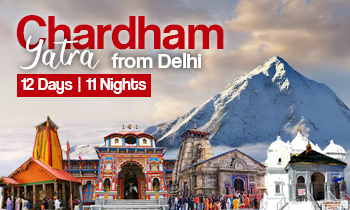
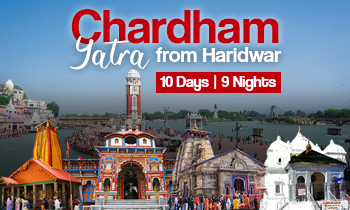


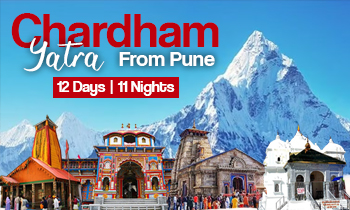
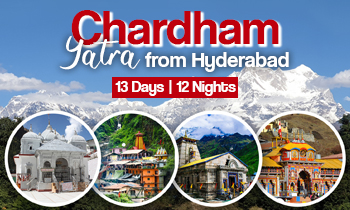



 Call
Call WhatsApp
WhatsApp Enquiry
Enquiry